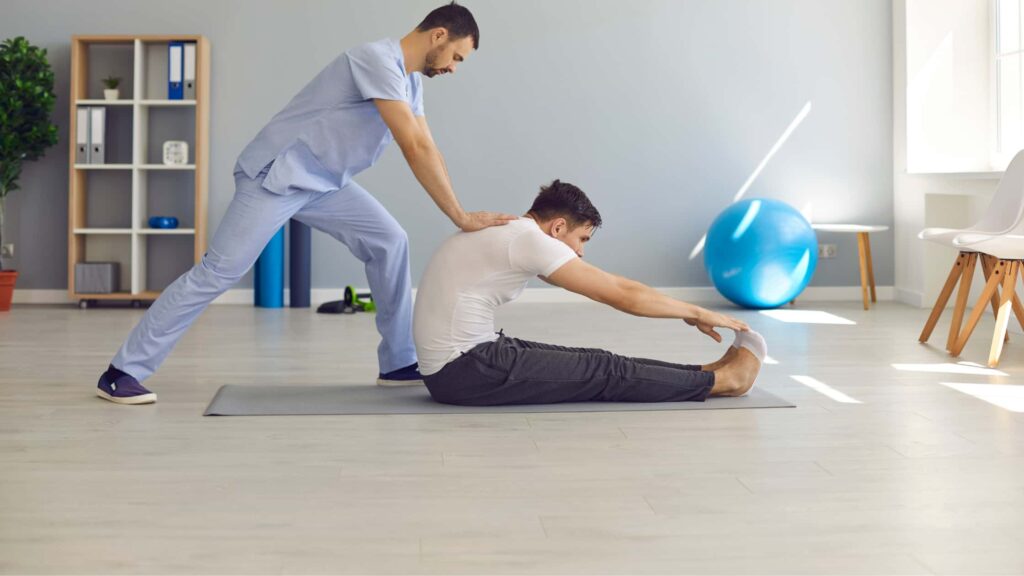
Stretching to avoid back pain is important when you workout. It can also help to relieve stiffness that you may already be experiencing in your back. If you have not yet started stretching, it is time to start! Here are some tips for stretching correctly so that you avoid back pain while maintaining the benefits of this activity.
- Stretching can be done on the floor, in a chair, or standing up. Choose whichever position is most comfortable for you, and that will give your body the best range of motion.
- It is important to stretch without pain! If it hurts, move on to a different stretch with less resistance until you find one that does not hurt when stretched out fully. There are many stretches, so don’t get discouraged before trying them all!
- Hold each stretch at least 30 seconds but no more than 60 seconds per side unless otherwise specified by a personal trainer or physical therapist. That way, muscle fibers have enough time to elongate while also increasing flexibility over time.
The benefits of stretching:
Stretching is a must for athletes and regular people alike. It can help prevent injuries, relieve back pain, increase flexibility which helps with everyday life tasks like getting out of bed or driving in an unfamiliar car!
Studies have shown that stretching also has the added benefit of decreasing muscle tightness after exercise. This means less stiffness post-workout to get you moving again quicker than if you skipped it altogether!
Stretching to Avoid Back Pain: What You Should Know
Stretching can be done in various positions and at different times throughout the day to help alleviate back pain. It is also important to stretch without causing undue pain as it will not produce lasting benefits if you are uncomfortable or cannot complete it correctly. Stretching should never hurt, so people with back issues need to speak up about any discomfort they may experience when trying these stretches for the first time!
-Stretches should always feel good rather than like work. If something feels wrong, then stop doing that particular movement right away! Make sure your body has enough room for a full range of motion and hold each position long enough before moving on. These little things can make all the difference in whether or not stretching turns into an enjoyable activity or a pain in the back.
-If you are not familiar with any stretches, check out some online resources such as those found on YouTube to see demonstrations of how to make these moves correctly and without causing unnecessary pain. A little research can go a long way towards ensuring that your stretching routine is beneficial instead of painful!
-Talk to someone about getting help for back pain if it cannot be resolved through self-care methods such as gentle stretching. There may be other options available, like surgery, that should never be ruled out right away. So it’s important to get advice from professionals before deciding what path might work best for short-term relief and longer-term lifestyle changes to avoid future occurrences of this all too common problem.
Can stretching make your back pain worse?
We’ve all been there- you feel a bit stiff after sitting down for too long, so you head to the gym and stretch out. The next day when we wake up, it feels like our biceps are glued together! It turns out that this is not an uncommon occurrence. According to some studies, over 50% of people who experience chronic low back pain have had their condition worsen due solely to exercise. They engaged during periods where they were already sore or injured.
If you’re interested in reducing your risk of back pain, stretching regularly is an easy and effective way to do so. The stretches we shared should work for most people as they can be tailored to individual needs. However, suppose these exercises are too difficult or ineffective on their own. In that case, it might be a sign that there’s something else going on with the spine, such as degenerative disc disease or spinal stenosis, which may require medical intervention from a chiropractor.
